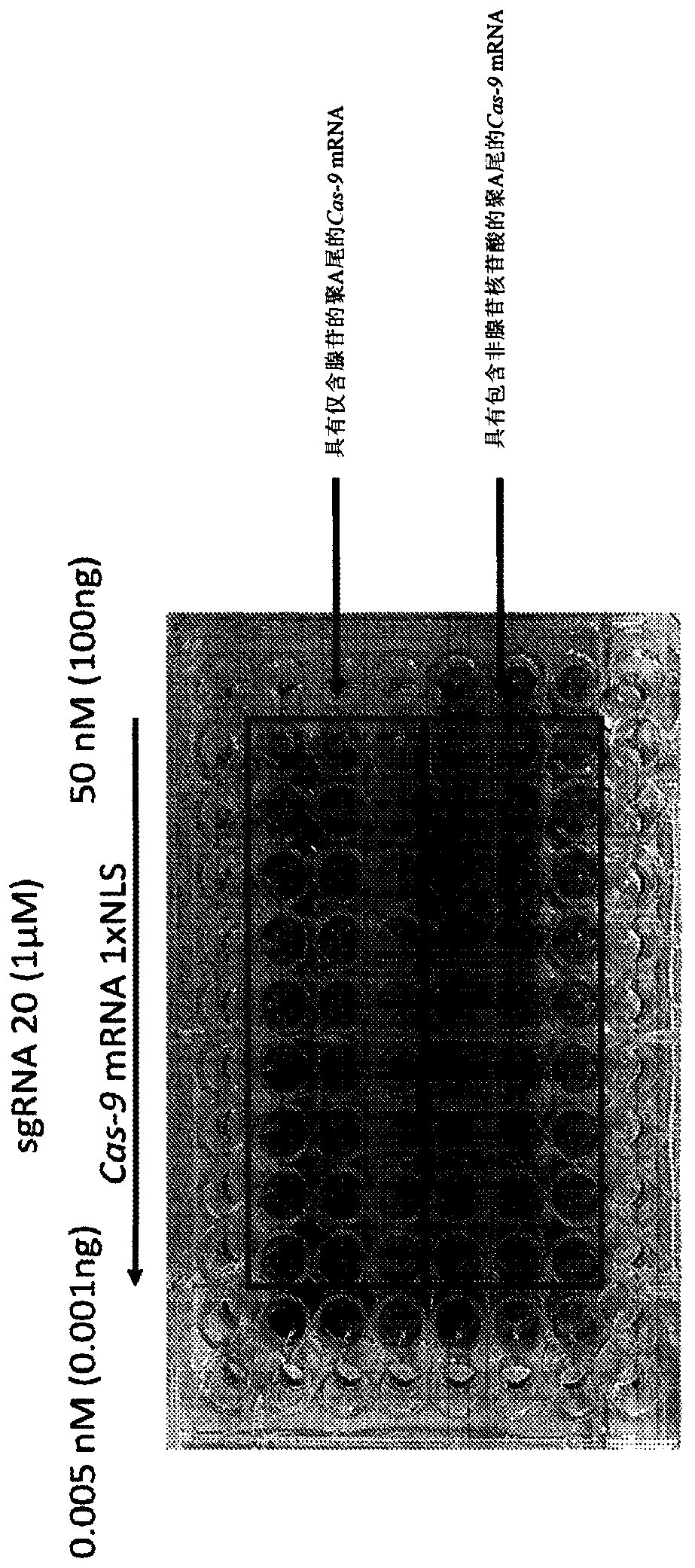Stabilized nucleic acids encoding messenger ribonucleic acid (MRNA)
A coding, nucleotide technology, applied in the field of DNA, which can solve problems such as change
- Summary
- Abstract
- Description
- Claims
- Application Information
AI Technical Summary
Problems solved by technology
Method used
Image
Examples
example
[0187] The following examples are provided to illustrate certain disclosed embodiments and should not be construed as limiting the scope of the disclosure in any way.
example 1
[0188] Example 1 - Design and stability of polyA-encoded stable plasmids
[0189] Design poly-A tails containing non-adenine nucleotides. The stability of plasmids encoding these poly-A tails with contiguous adenine nucleotides and non-adenine nucleotides (eg interrupter sequences) was compared to the stability of poly-A tails consisting only of adenine nucleotides.
[0190] The problem of missing adenosine numbers in mRNA poly-A tails consisting only of adenosine is highlighted in Table 2. The sequence of the poly-A tail containing 96 adenosines was inserted into the pUC57 plasmid (Genscript) and transformed into E. coli. Cells were plated on LB-Amp plates and incubated overnight at 30°C or 37°C. Eight colonies were picked and inoculated into 96-well plates with LB-Amp medium and grown overnight at 30°C or 37°C (day 1). Samples from day 1 cultures were added to fresh LB-Amp medium and grown for two additional days at 30°C or 37°C (day 2). DNA was purified from day 1 and d...
example 2
[0198] Example 2 - Activity of constructs with poly A tails comprising non-adenine nucleotides
[0199] Experiments were performed to determine whether there was a difference in the potency of mRNAs with poly-A tails containing non-adenine nucleotides (interrupting sequences) versus those with poly-A tails containing only adenosine. A model system was used in which mRNA encoding the Cas9 protein was transfected into HEK-293 cells by electroporation together with a reporter plasmid encoding secreted embryonic alkaline phosphatase (SEAP) and a guide RNA targeting SEAP. Successful expression of Cas9 protein from mRNA results in cleavage of the SEAP target sequence, resulting in a color change reflecting reduced SEAP production. SEAP HEK-Blue reporter reagent was obtained from Invivogen. The sequence (SEQ ID NO:6) containing the T7 promoter and encoding the Cas9 mRNA with an adenosine-only poly-A tail (designed to have 100 adenosine nucleotides but was shown to have 97 adenosine ...
PUM
 Login to View More
Login to View More Abstract
Description
Claims
Application Information
 Login to View More
Login to View More - R&D
- Intellectual Property
- Life Sciences
- Materials
- Tech Scout
- Unparalleled Data Quality
- Higher Quality Content
- 60% Fewer Hallucinations
Browse by: Latest US Patents, China's latest patents, Technical Efficacy Thesaurus, Application Domain, Technology Topic, Popular Technical Reports.
© 2025 PatSnap. All rights reserved.Legal|Privacy policy|Modern Slavery Act Transparency Statement|Sitemap|About US| Contact US: help@patsnap.com



